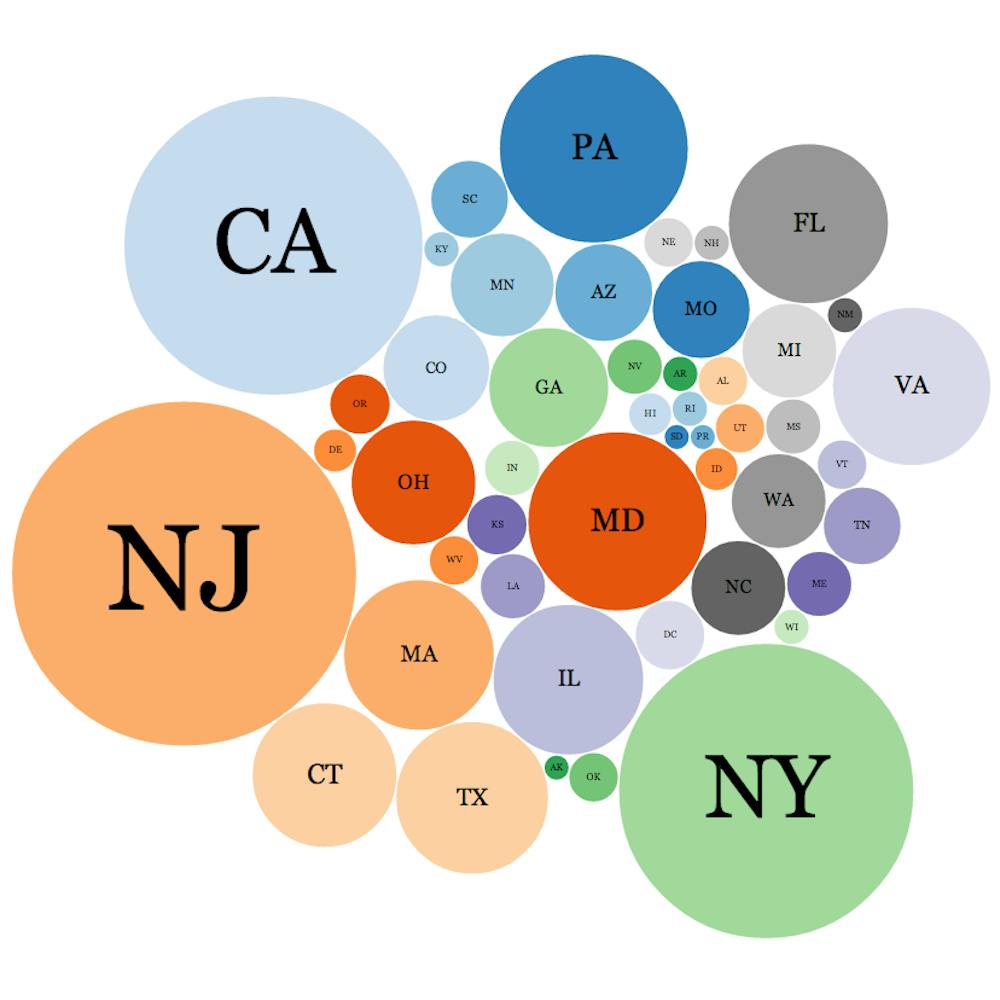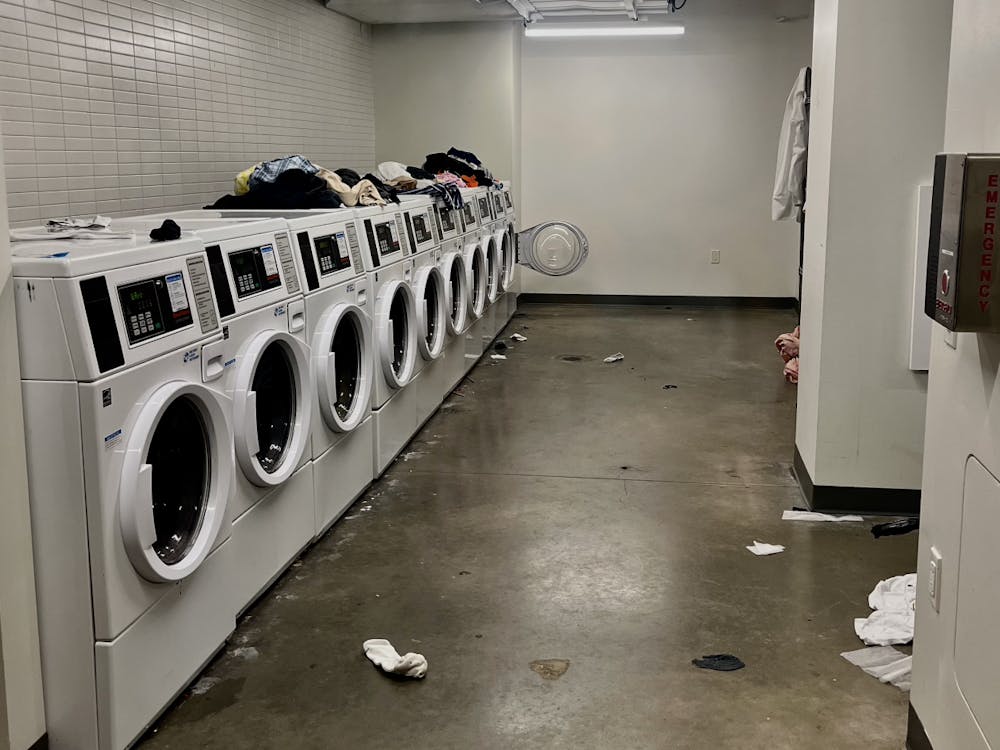New Jersey and California together contributed to over 27 percent of the total Class of 2017, while four states — Montana, North Dakota, Wyoming and Iowa — contributed no students. International students made up 12.5 percent of the Class of 2017 and came from 54 countries, according to Princeton Residential College Student Facebook.
The University’s Undergraduate Admissions Office dispatches several admissions officers abroad every year to attract applicants from around the world. In visits that average two weeks each, these admissions staff members reached 25 countries over the 2012-2013 academic year and are scheduled to visit 31 countries this coming year, according to the Admissions Office. The pool of international applicants for admission to the University has increased 93.5 percent over the past eight years, according to the Admissions Office.
According to Dean of Admissions Janet Rapelye, these numbers do not affect the consideration of applicants the following year; students from states without representation this year do not have an advantage applying the next year. Rapelye explained that the University misses approximately three states every year and this fact is unavoidable.
Tessa Myren ’17 is the only student in the Class of 2017 from South Dakota and is the only student, according to Myren, to apply to and enroll to Princeton from her high school in three years. She explained that students are encouraged to attend in-state colleges by school counselors, family members and even the governor.
“There was a little bit of a feeling of pariahness, almost, from my classmates when I told them I was going to Princeton,” she said. “I felt like I couldn’t really tell people that I was applying to Princeton because I was afraid of being discouraged and I was a little bit afraid that if I didn't get in, it would be a total disaster.”
Prior to applying, Myren explained, most of her knowledge about Princeton was obtained through the University website. She was able to visit Princeton once and attend Preview weekend after being accepted through the Early Action admission process.
For many international students, however, their only exposure to the University comes from visiting its website. For Cheryne Jonay ’17, a student from Switzerland, and Vincent Karuri ’17, a student from Kenya, applying to the Princeton was a personally-motivated decision to look outside the obvious choices for higher education that often required independently researching the college.
Prior to moving in this fall, Jonay, Karuri and Mary Hui ’17, a student from Hong Kong, did not visit Princeton, which they each said was a challenge in applying as an international student. However, Jonay said she found that the University’s diminished presence in her life as a high school student proved to be an advantage.
“I was a lot more relaxed about it because I didn’t feel pressure from anyone,” Jonay said. She explained that in her school, “it wasn’t like from a young age on, you know you have to go to this and this place and your parents put money aside for you to go to college. It was more like, if we get in, if we get a chance to go, it’s great but it’s not the end of the world if we don’t.”
Jonay, Karuri and Hui also said they all learned about the University through students who had enrolled in the years before them or through their high school college counselors. During the application process, their connection to the University was primarily established through these means and through an alumni interview.
Undergraduate admissions officers will travel to 31 countries over the course of the upcoming academic year with colleagues from other U.S. colleges like Columbia and Dartmouth, according to Rapelye. Argentina, India, Swaziland and Turkey are all on the scheduled list of countries.
Rapelye noted that the efforts to expand international representation echoed the University’s unofficial motto “In the Nation’s Service and in the Service of All Nations.”

“Princeton’s mission of being an international university means not just studying international affairs and sending students abroad, but having international students study here,” she said. “We’re a world class university and we want to make sure we’re educating the very best students around the world, which is why we travel widely and try to touch base with as many students as we can in a given year.”
In addition to taking the SAT subject tests and the SAT or ACT, those applying as international students must take the Test of English as a Foreign Language, or TOEFL, if they did not attend an English-speaking school.
The University is one of six U.S. colleges that provide need-blind admission and full-need financial aid to international students.
Within the United States, six states — New Jersey, California, New York, Pennsylvania, Maryland and Florida — were home to over half of the Class of 2017. Rapelye noted that the University draws a large applicant pool from those states but said that the Admissions Office does not use a quota when accepting applicants.
Clarification: This article has been updated to use data from College Facebook throughout.








